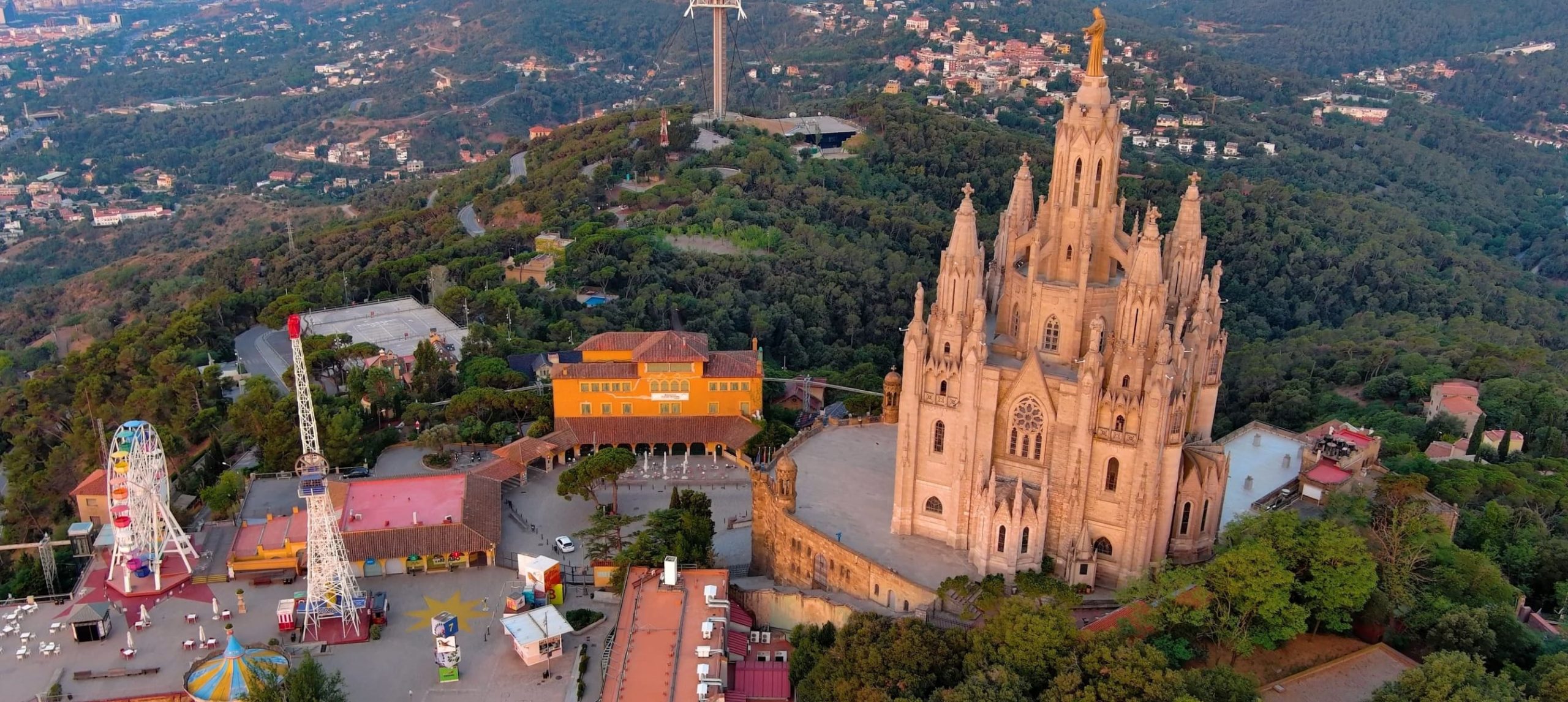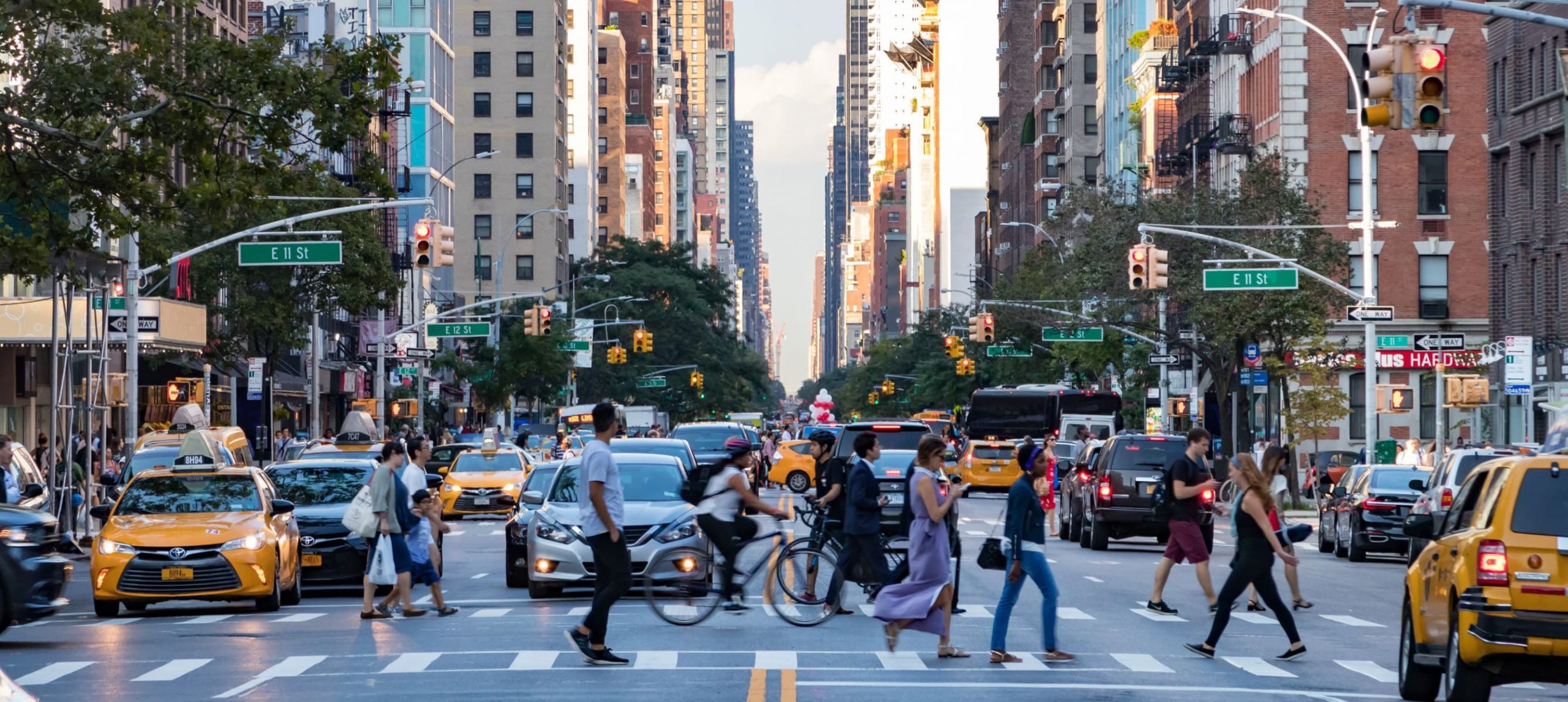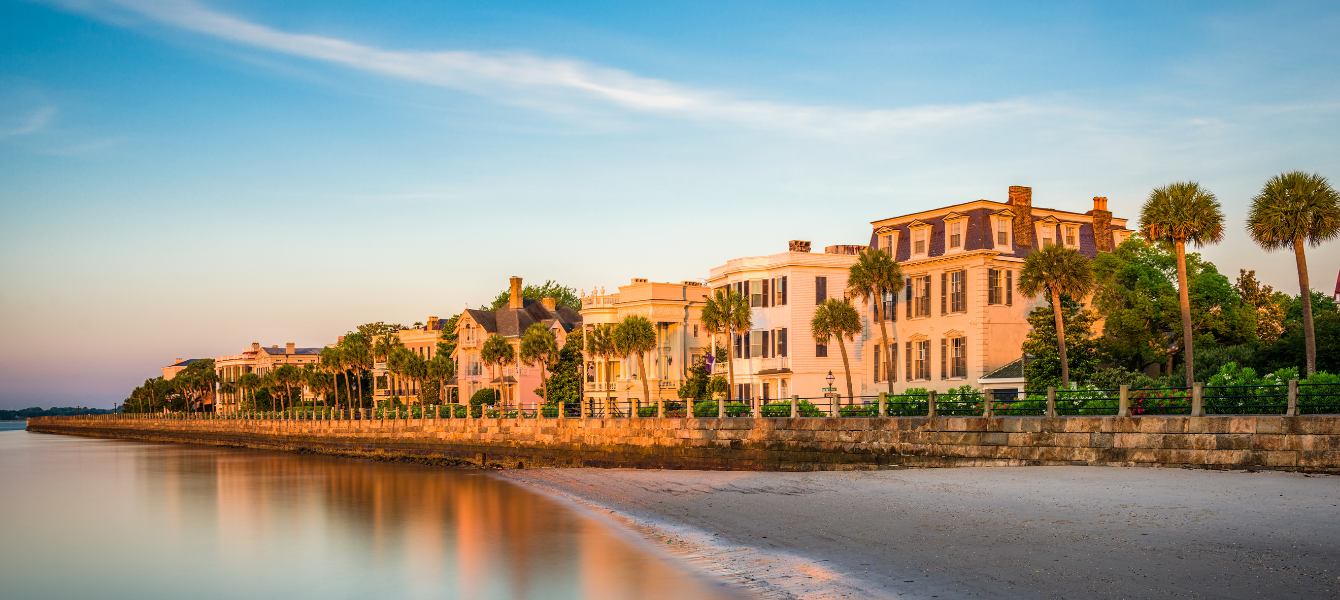Barcelona, a vibrant city steeped in a rich cultural heritage and an unmistakable soulful atmosphere, offers travelers a tantalizing array of experiences.
With its stunning architecture, world-class museums, sun-kissed beaches, vibrant nightlife, and mouthwatering food scene, Barcelona truly spoils visitors with everything they could ask for.
Yet, beyond the well-known icons like La Sagrada Familia, Camp Nou, Las Ramblas, and Park Güell, Barcelona unveils a tapestry of many hidden gems just waiting to be discovered.
From a unique museum dedicated to chocolate to an Art Nouveau-style hospital, and massive underground Roman ruins, we’ve rounded up 17 Barcelona hidden gems that’ll leave you in awe.
Find Places To Stay In Barcelona
17 Secret Spots & Hidden Gems In Barcelona
Hospital de Sant Pau (Recinte Modernista de Sant Pau)
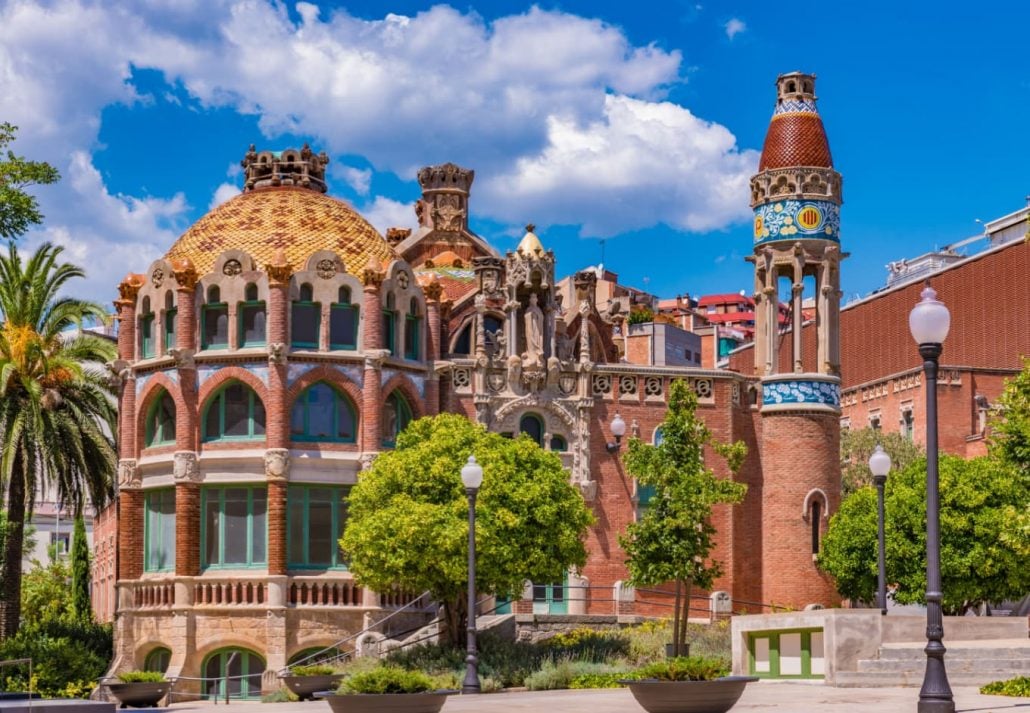
The Hospital de Santa Creu i Sant Pau (aka Recinte Modernista de Sant Pau) is a remarkable architectural gem listed as a UNESCO World Heritage Site.
Built in the early 20th century in Barcelona’s Eixample district, this Art Nouveau-style hospital is a testament to the visionary work of architect Lluís Domènech i Montaner.
The hospital was designed with the intention of providing a tranquil and therapeutic environment for patients.
It consists of several interconnected buildings, each adorned with intricate details, colorful mosaics, ornate sculptures, ceramic tiles, and stained glass windows.
Showcasing a harmonious blend of Gothic, Modernista, and Art Nouveau elements, the hospital’s architecture creates a captivating visual feast for visitors.
While no longer an active hospital, the site has transformed into a cultural center that stands as a testament to Barcelona’s architectural heritage and offers a unique glimpse into the city’s rich history.
Housed within the inside courtyard of the hospital’s complex and surrounded by orange trees you’ll find El Jardí. This tapas and cocktail bar is an oasis of peace and provides a unique ambiance for a breezy happy hour in Barcelona.
Address: C/ de St. Antoni Maria Claret, 167, Barcelona, Spain
Bunkers del Carmel
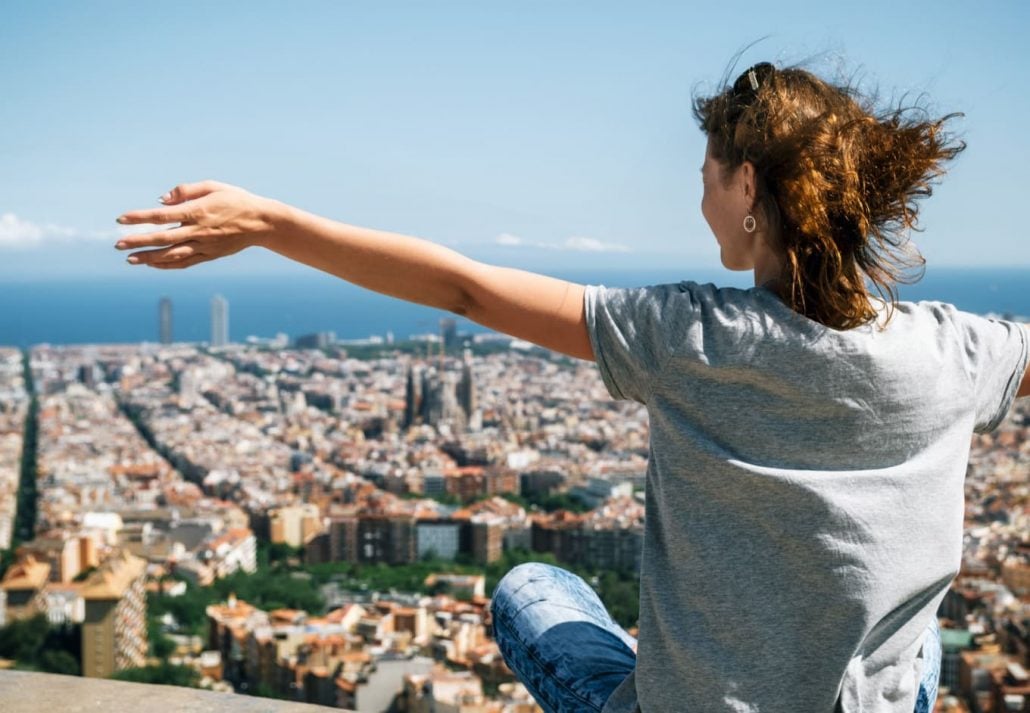
Nestled on top of the Turó de la Rovira hill, in the El Carmel district, Bunkers del Carmel was erected as a series of anti-aircraft fortifications during the Spanish Civil War.
This Barcelona hidden gem rewards visitors with picture-perfect views of Barcelona, making it one of the city’s most sought-after sunset spots.
Make sure to buy a bottle of Spanish cava, pack some snacks (bread, fuet, and cheese), and head to Bunkers del Carmel for a stunning sunset.
From Bunkers del Carmel, you’ll be able to see La Sagrada Familia, Montjuïc Hill, and the Mediterranean Sea stretching far into the horizon.
Address: Carrer de Marià Labèrnia, s/n, 08032 Barcelona, Spain
Museu de la Xocolata
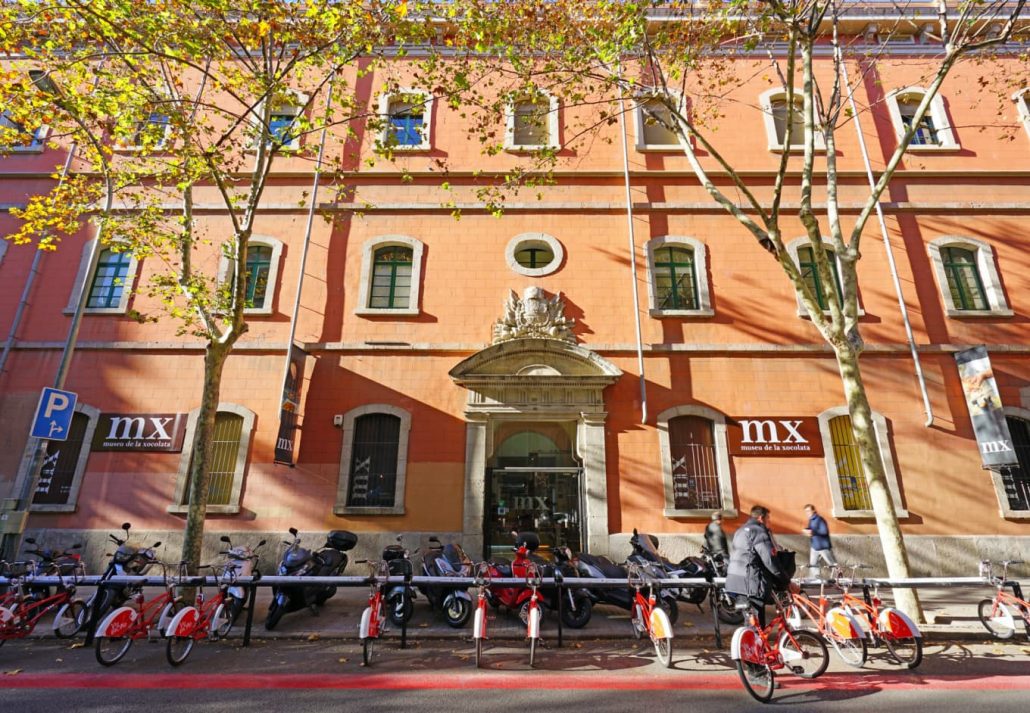
Museu de la Xocolata is one of the best Barcelona hidden gems for those with a sweet tooth.
Nestled in the vibrant neighborhood of El Born, close to the Picasso Museum, this institution offers an immersive journey through the history and culture of chocolate.
Here, you’ll be able to dive deep into chocolate’s evolution from ancient Mayan and Aztec civilizations to the modern-day confectionery we know and love.
Visitors can explore interactive exhibits, displays, and multimedia presentations that delve into the fascinating world of chocolate-making.
One of the highlights of the Museu de la Xocolata is its collection of intricate chocolate sculptures crafted by skilled chocolatiers.
These edible masterpieces depict famous landmarks, mythical creatures, and iconic figures, showcasing the artistic possibilities of chocolate as a medium.
In addition to the informative exhibits, the museum also offers workshops and tastings, allowing visitors to engage all their senses in the chocolate experience.
Address: C/ del Comerç, 36, 08003 Barcelona, Spain
Santa Caterina Market
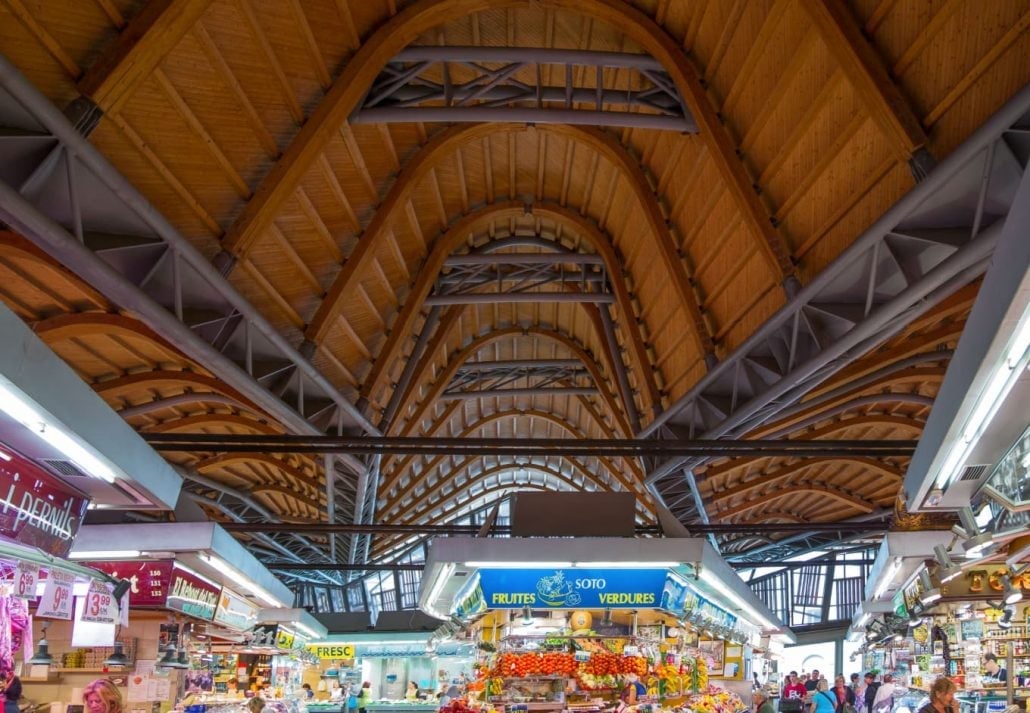
There’s a range of excellent local markets that go way beyond the famous La Boqueria Market.
Foodies seeking a less touristic experience must visit Mercat de Santa Caterina, located on the edge of the El Born district.
The building is an attraction itself, with its iconic undulating roof adorned with colorful mosaic tiles, which immediately catches the eye and sets it apart from other markets in the city.
Designed by architects Enric Miralles and Benedetta Tagliabue, the is set within a former convent and seamlessly blends with the historical surroundings.
Inside the Santa Caterina Market, you’ll find a captivating world of flavors and aromas. The stalls are brimming with an abundance of fresh produce, including fruits, vegetables, meats, fish, and an array of local and exotic ingredients.
The market is a haven for food lovers, offering a wide variety of high-quality products sourced from Catalonia and beyond.
Address: Av. de Francesc Cambó, 16, 08003 Barcelona, Spain
Casa Vicens
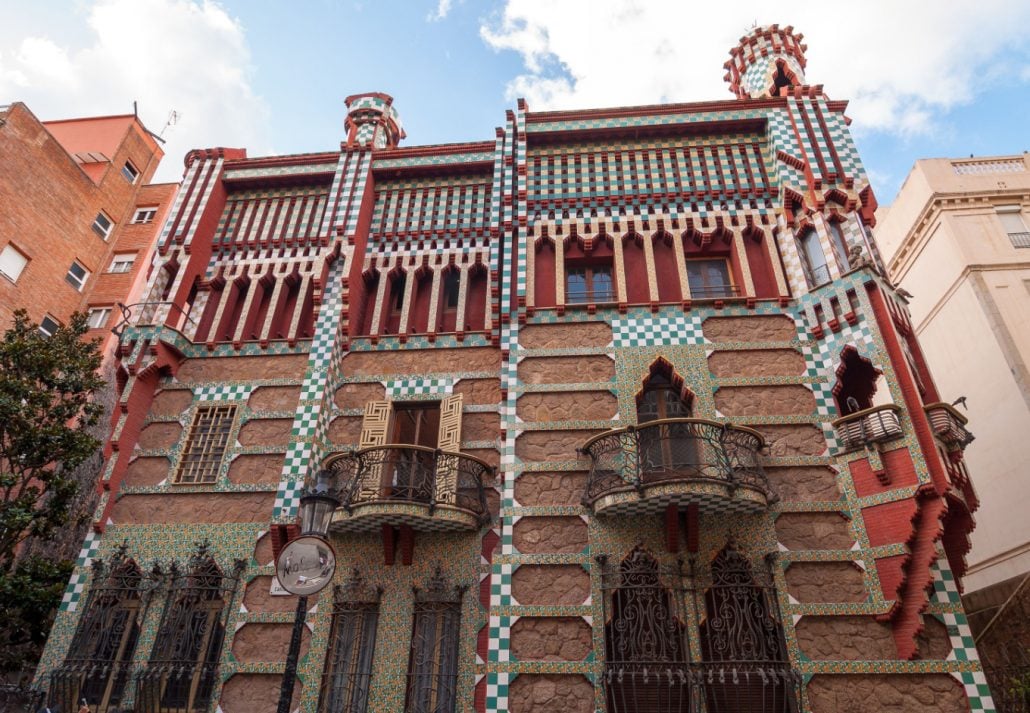
Seeking to discover the enchanting buildings by Antoni Gaudi? Then, don’t miss the chance to visit Casa Vincens.
Lesser known (but equally enchanting) as iconic Gaudi creations such as Casa Battlò and Park Guell, Casa Vicens is an important architectural landmark in Barcelona.
The house, constructed between 1883 and 1885, was Gaudí’s first major commission and showcases his early architectural style.
Gaudí took inspiration from various sources, including Moorish and Oriental designs. This resulted in a unique and eclectic architectural masterpiece that stands out for its deep colors, intricate detailing, and inventive ornamentation.
One of Casa Vicen’s most striking features is the façade decorated with a fascinating interplay of colorful ceramic tiles in shades of green, blue, and white.
Address: Carrer de les Carolines, 18-24, 08012 Barcelona
Parc del Laberint d’Horta
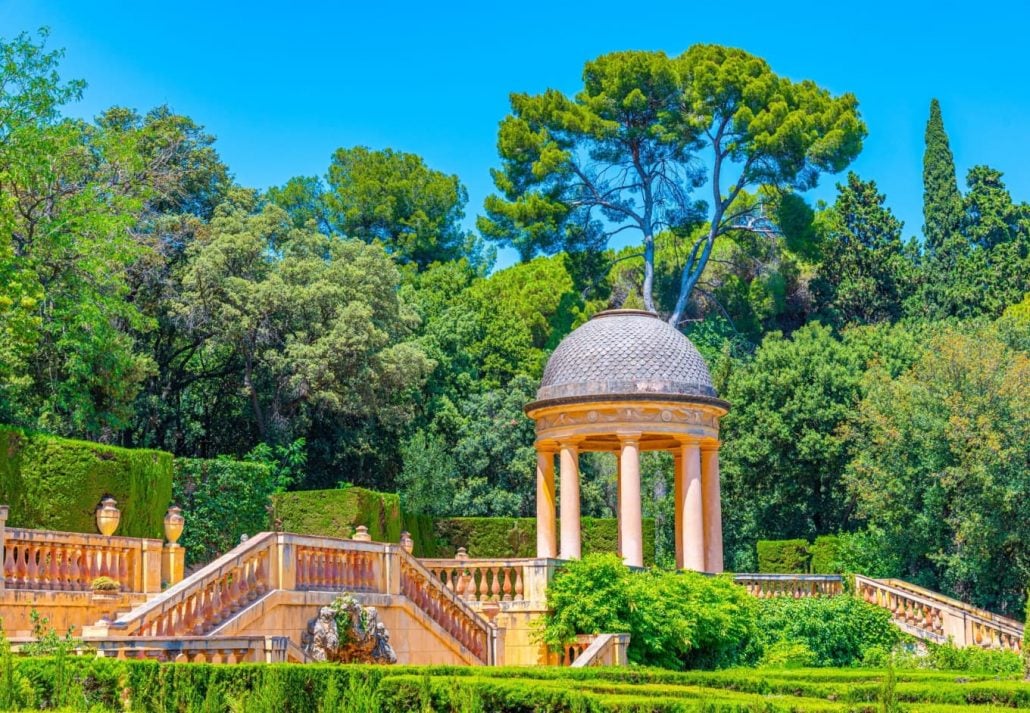
Located on the outskirts of Barcelona, in the Horta-Guinardó district, Parc del Laberint d’Horta is an enchanting park that offers a serene and captivating escape from the bustling city.
Horta’s Labyrinth Park dates back to the late 18th century, making it the oldest garden in Barcelona.
Its main attraction is the meticulously designed labyrinth, an intricate network of trimmed cypress trees that beckons visitors to embark on a delightful maze-solving adventure.
As you navigate through the labyrinth’s twists and turns, the sense of anticipation and discovery adds to the park’s allure.
Beyond the labyrinth, the park unfolds into a haven of natural beauty and tranquility. Immaculate gardens, adorned with fragrant flowers, meandering pathways, and elegant fountains, create a picturesque setting for leisurely strolls and moments of relaxation.
Address: Passeig dels Castanyers, 1, 08035 Barcelona, Spain
Pedralbes Monastery
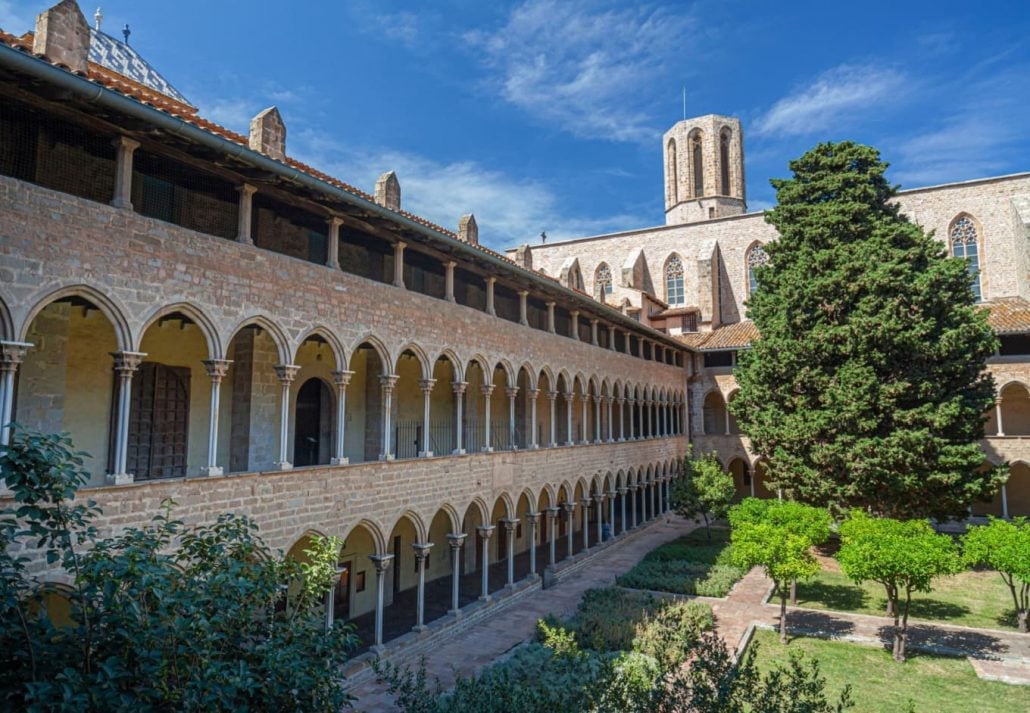
Framed by the lush hills of the Collserola Natural Park the Pedralbes Monastery, in the upscale district of Pedralbes, the Pedralbes Monastery holds deep roots in Barcelona’s medieval past.
The monastery was founded by King James II of Aragon for his wife Elisenda de Montcada in 1326 as a convent for the Order of Saint Clare, also known as the Poor Clares.
During the Reapers’ War of the 1640s and ’50s, the nuns were expelled from the monastery. Some still reside in the complex, which was declared a national monument in 1991.
The monastery’s architecture is a sight to behold. It showcases a harmonious blend of Gothic and Catalan Gothic styles, reflecting the artistic trends of the time.
The complex comprises several buildings, including the church, cloister, chapter house, and dormitories.
While exploring this alluring complex, you’ll get the chance to see several buildings like the church, cloister, chapter house, and dormitories.
You’ll stand in awe of the church’s impressive rose window, intricate stone carvings, and stained glass windows, which showcase exquisite craftsmanship.
The monastery’s cloister is a highlight of the complex, featuring a peaceful courtyard adorned with lush gardens and a central fountain.
Address: Baixada del Monestir, 9, Barcelona, Spain
Pavellons Güell
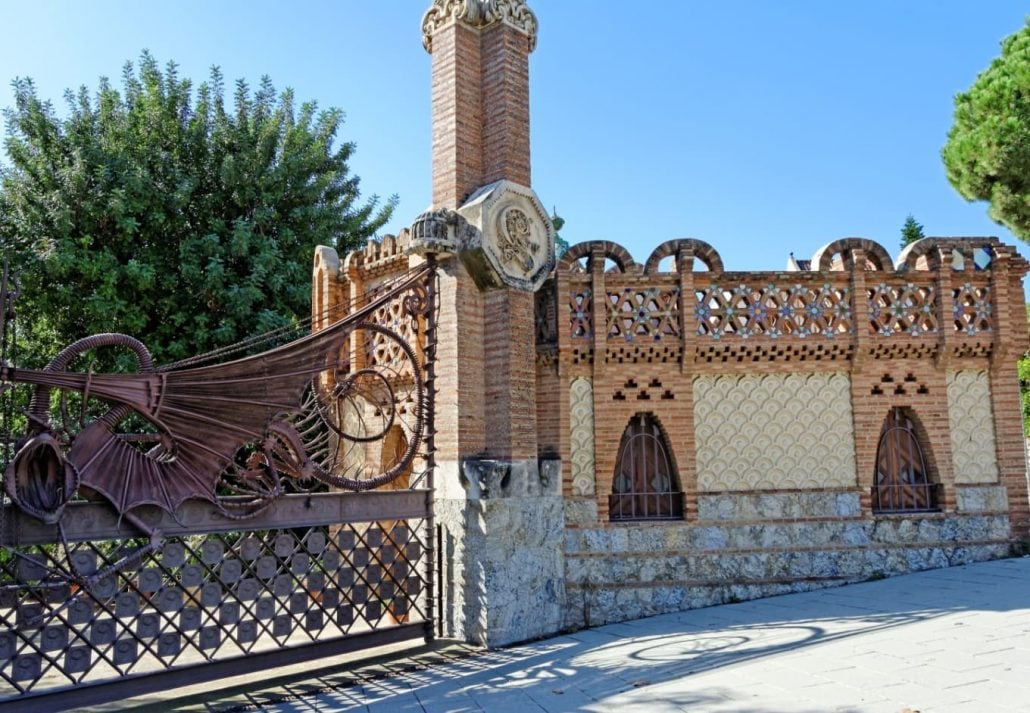
The Pavellons Güell, also known as the Güell Pavilions are a remarkable architectural ensemble designed by architect Antoni Gaudí.
Situated in on Barcelona’s Avinguda Pedralbes, these pavilions were commissioned by Count Eusebi Güell, a prominent industrialist and Gaudí’s main patron.
Pavellons Güell were built between 1884 and 1887, and intended as gatehouses for the Güell family’s estate.
These structures showcase beautifully display a fusion of Gothic, Moorish, and Art Nouveau influences, blended with Gaudí’s imaginative touches.
You’ll be amazed by the intricate ironwork, colorful tile mosaics, and organic shapes that exemplify Gaudí’s remarkable ability to integrate nature-inspired elements into his designs.
The pavilion’s entrance gate is decorated with a mythical dragon spreading its wings, evoking a creature from the Garden of the Hesperides. Simply breathtaking!
Address: Av. de Pedralbes, 7, 08034 Barcelona, Spain
Jardins de Mossen Costa i Llobera
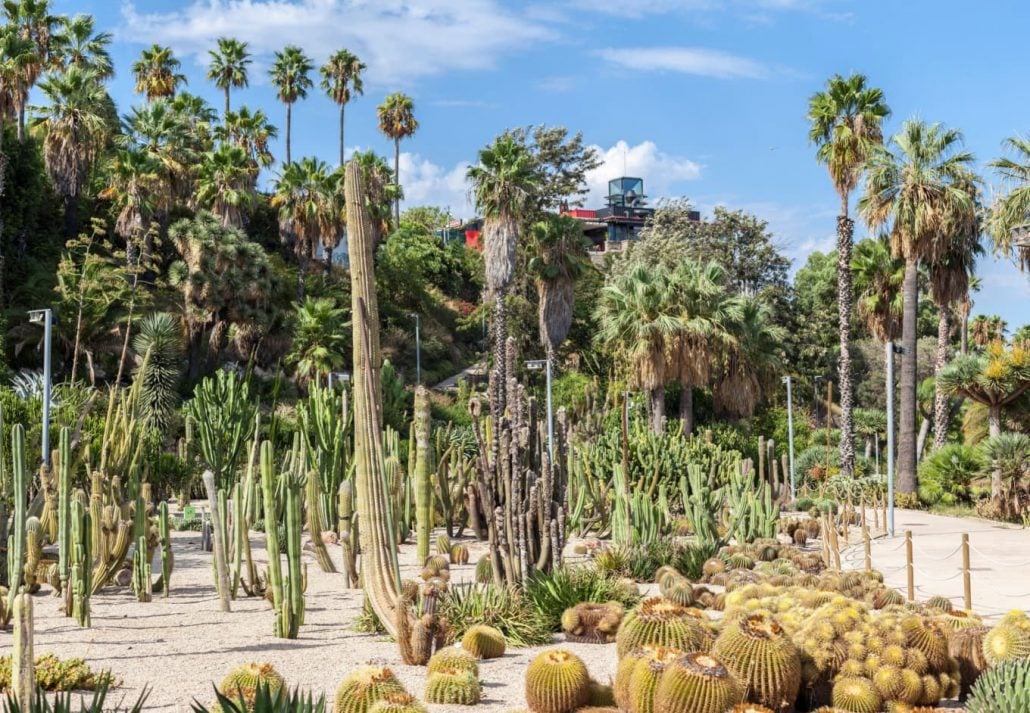
The Jardins de Mossèn Costa i Llobera, also known as the Costa i Llobera Gardens, is a picturesque botanical oasis nestled on the slopes of Montjuïc Hill.
Named after the Mallorcan poet Miquel Costa i Llobera, these gardens are renowned for their stunning collection of cacti and other succulent plants.
The cactus garden is home to about 800 different cacti species originating from many different continents and countries.
This impressive collection makes it one of Europe’s biggest gardens specializing in cacti and succulent plants.
Visitors can wander through the meandering paths and admire the captivating shapes, sizes, and vibrant colors of these resilient plants.
Jardins de Mossèn Costa i Llobera also offers breathtaking panoramic views of Barcelona, with the cityscape, sea, and sky forming a captivating backdrop.
Address: Ctra. de Miramar, 38, 08038 Barcelona, Spain
Mirador de l’Alcalde
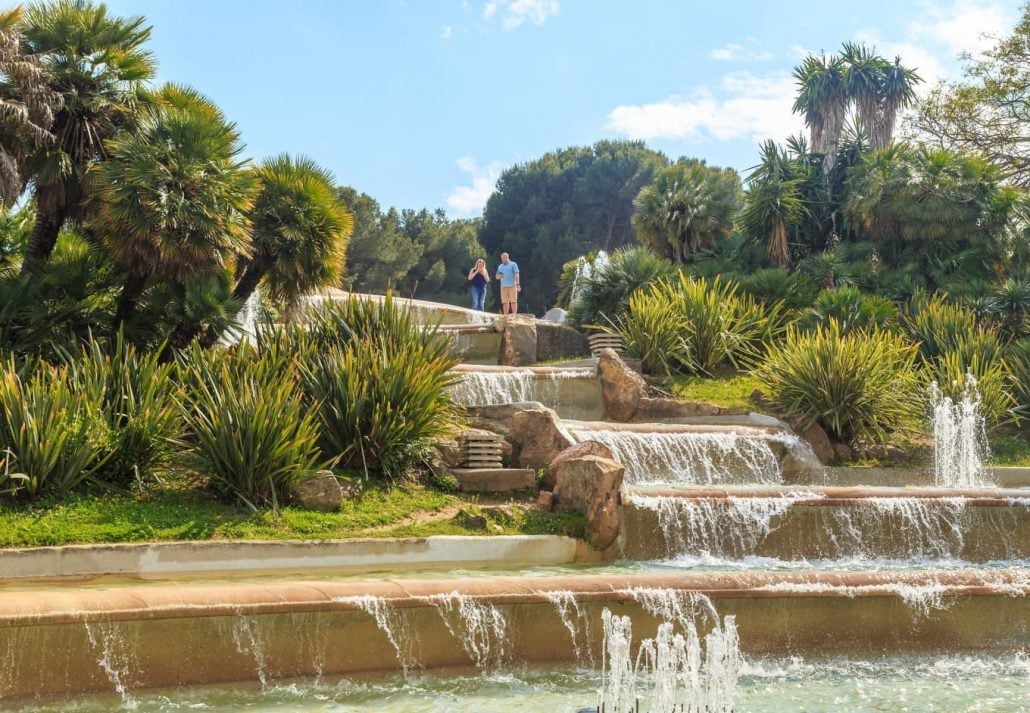
The Mirador de l’Alcalde is a stunning viewpoint that offers breathtaking panoramic views of the city and its surroundings.
Situated in the Montjuïc Hill area, this elevated vantage point provides visitors with a mesmerizing perspective of Barcelona’s iconic skyline.
From this vantage point, visitors can take in the expansive vistas that stretch from the Mediterranean Sea to the urban landscape of Barcelona.
Also known as the Mayor’s Lookout, The Mirador de l’Alcalde is beautifully landscaped, with lush greenery and well-maintained terraced gardens adding to the visual appeal.
It is an ideal spot for taking photographs, capturing the cityscape at different times of the day, or simply enjoying the scenic beauty that Barcelona has to offer.
The viewpoint is easily accessible, either by a short walk or by taking the Montjuïc Cable Car, adding to its popularity among visitors.
Address: Ctra. de Montjuïc, 43, 08038 Barcelona, Spain
Parc de la Ciutadella
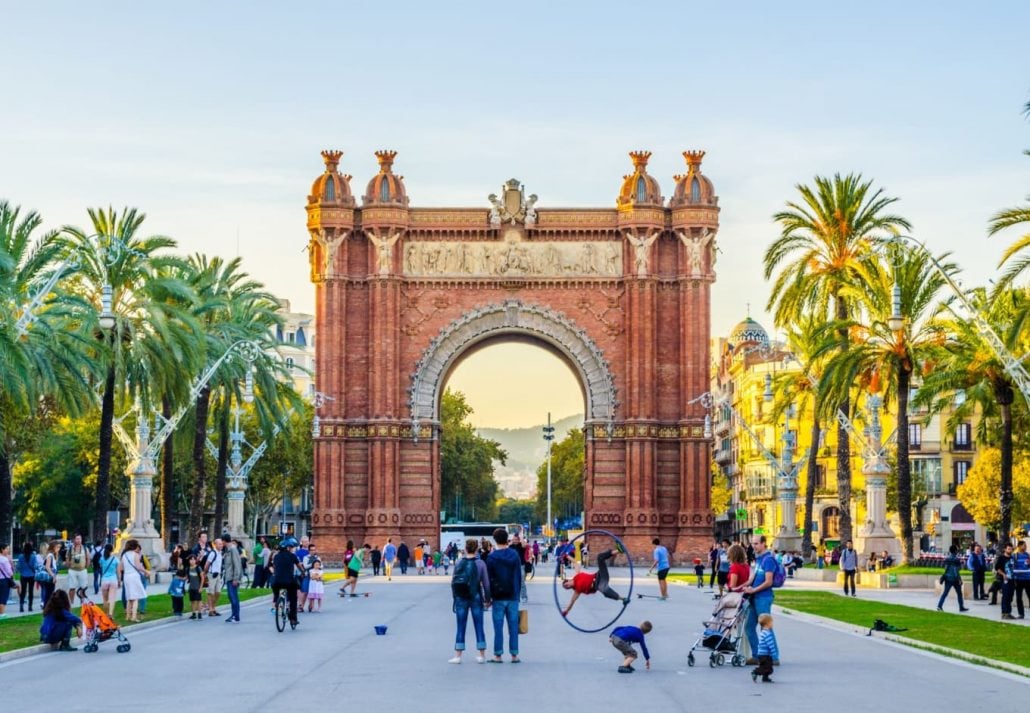
Situated on the northeastern edge of Ciutat Vella, on the grounds where Barcelona’s fortress once stood, Parc de la Ciutadella comprises 17 hectares of beautifully landscaped areas.
The park is home to an array of hidden gems, including kid-friendly Barcelona attractions like the Zoological Museum.
Parc de la Ciutadella also boasts a variety of open green spaces that are perfect for a breezy picnic and for escaping the city’s hustle and bustle.
Not by chance, visiting the park is one of the best things to do in Barcelona with kids.
Address: Passeig de Picasso, 21, 08003 Barcelona, Spain
Roman Ruins in Barcelona’s Gothic Quarter
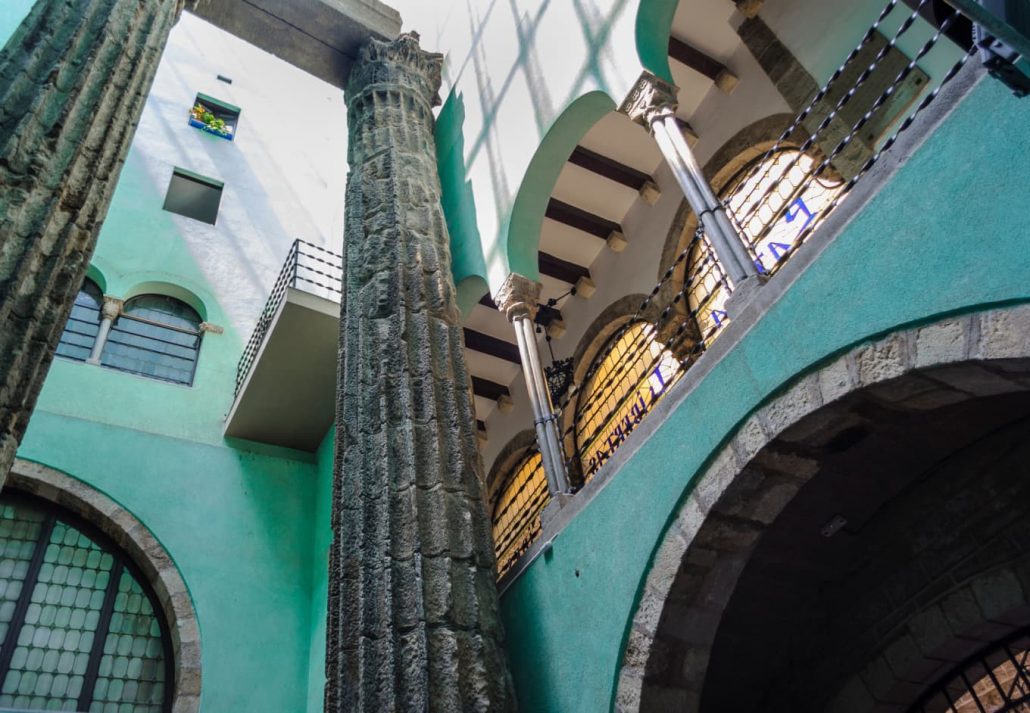
Under the narrow streets of Barcelona’s Gothic Quarter, you’ll find a fascinating and extensive complex of Roman ruins.
Hidden beneath the bustling streets, these ruins take visitors on a journey back in time to the Roman era.
The underground ruins are part of Barcelona’s Musea d’História de la Ciutat (MUHBA), which is located just 2 minutes from the Barcelona Cathedral.
Dating back to the 1st century BC, they showcase the foundation of Barcelona and its development during the Roman period and are often described as the most extensive underground ruins in the world.
As you explore the site, you’ll encounter a labyrinth of stone walls, pathways, and remnants of buildings, which give insights into the layout and structure of the ancient city.
Address: Pl. del Rei, s/n, 08002 Barcelona, Spain
Also Read:
Where To Stay in Barcelona: The 7 Best Areas
The 8 Coolest Hostels in Barcelona, Spain
The 5 Best Hotels in the Gothic Quarter, Barcelona
La Plaça – Gastro Mercat
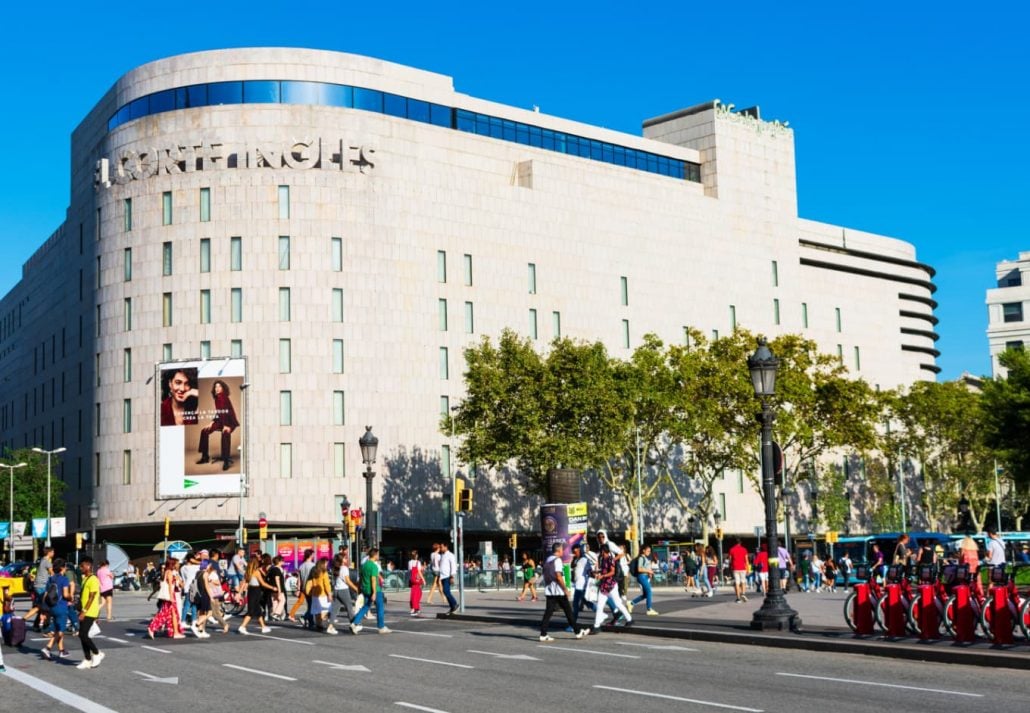
You can also find one of Barcelona’s hidden gems inside El Corte Inglès, the biggest department store group in Europe.
On the 9th floor of the store lies a newly renovated gourmet space offering a wide selection of foods, including Spanish classics, as well as Italian and Asian.
The restaurant area also offers a 240º panoramic view of Barcelona and its main landmarks like the Sagrada Familia and Tibidabo.
Address: Pl. de Catalunya, 14, 08002 Barcelona, Spain
Teatre Grec & Grec Garden
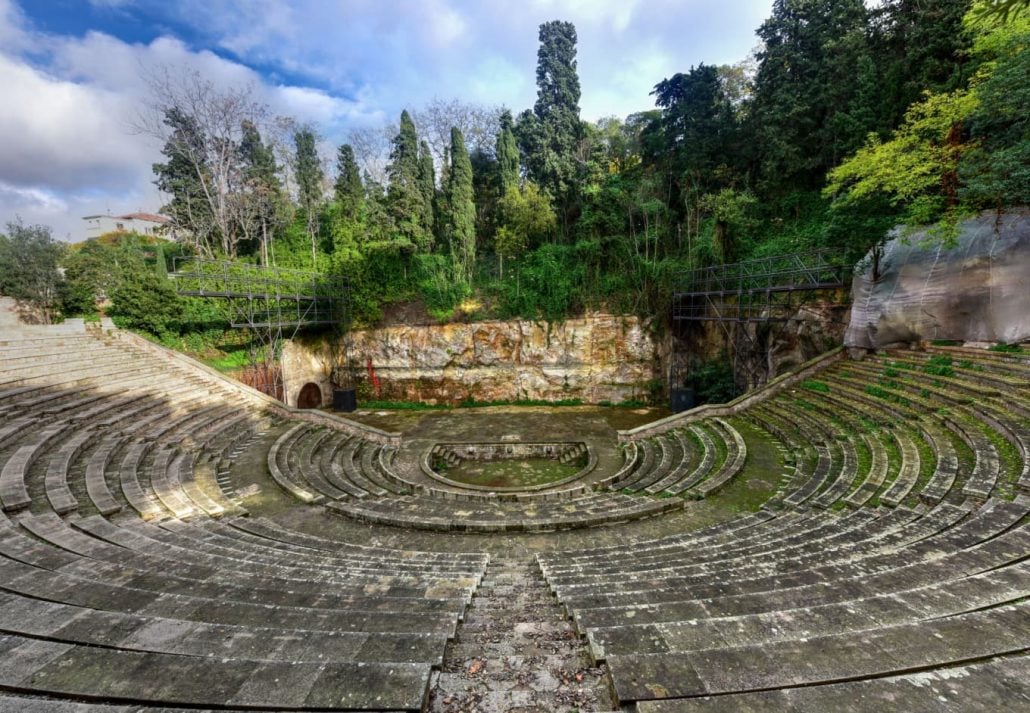
Teatre Grec, also known as the Greek Theater, is a renowned open-air theater located on Montjuïc Hill.
This beautiful Greek-style theater has played a significant role in the city’s cultural scene since its construction for the 1929 International Exhibition.
Designed by the architects Ramon Reventós and Nicolau Maria Rubió i Tudurí, the Teatre Grec stands out for its distinctive Greek-inspired architecture, which includes semicircular seating and columns reminiscent of ancient amphithe.
Adjacent to the theater is the Grec Garden, a picturesque and tranquil green space that serves as an extension of the theater’s ambiance.
This elegant garden features well-manicured lawns, shady trees, and beautiful paths, creating an inviting atmosphere for visitors to relax and enjoy the surrounding nature.
Address: Passeig de Santa Madrona, s/n, 08038 Barcelona, Spain
Fundació Antoni Tàpies
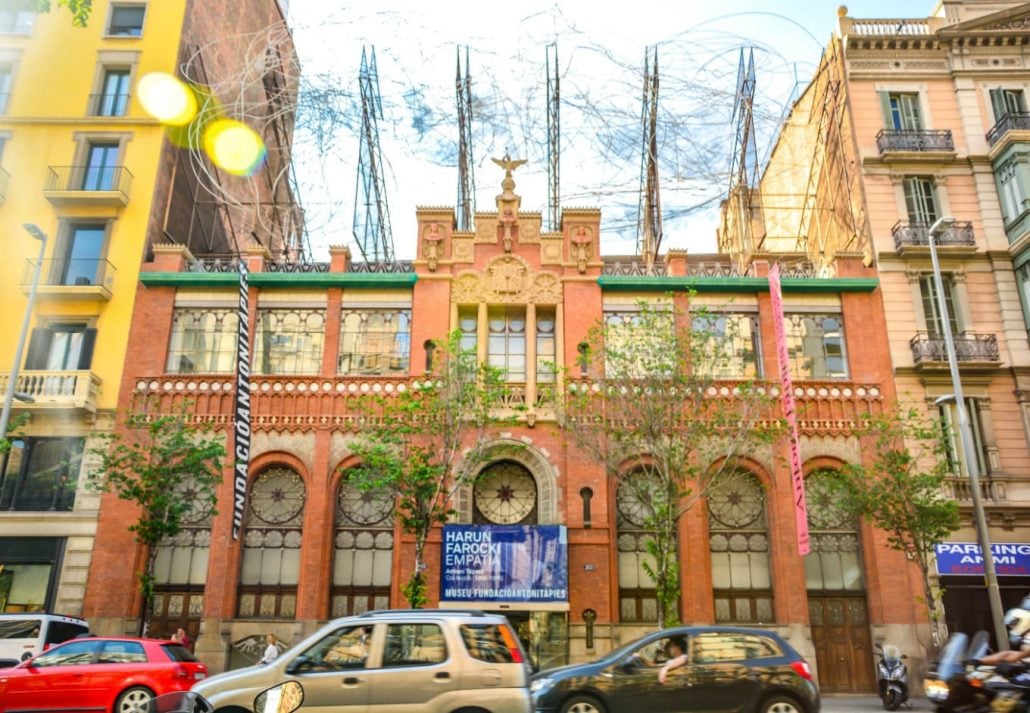
Named after the renowned Catalan artist Antoni Tàpies, Fundació Antoni Tàpies is dedicated to promoting the study and appreciation of contemporary art in Barcelona.
The foundation is housed in an iconic building that showcases a blend of modern and industrial architecture.
Designed by the architects Roser Amadó and Lluís Domènech i Montaner, the structure itself is considered a work of art.
It features a distinctive façade adorned with metallic mesh and an eye-catching rooftop sculpture.
Inside the foundation, visitors can explore a vast collection of Antoni Tàpies’ works, which span his career from the 1940s to the present.
Tàpies was known for his experimental and innovative approach to art, incorporating elements of abstraction, symbolism, and materials such as sand, marble dust, and everyday objects.
In addition to Tàpies’ collection, the foundation hosts rotating contemporary art exhibitions, providing a dynamic and diverse program that showcases various creative trends and perspectives.
Address: C/ d’Aragó, 255, 08007 Barcelona, Spain
Tibidabo & Temple of the Sacred Heart of Jesus
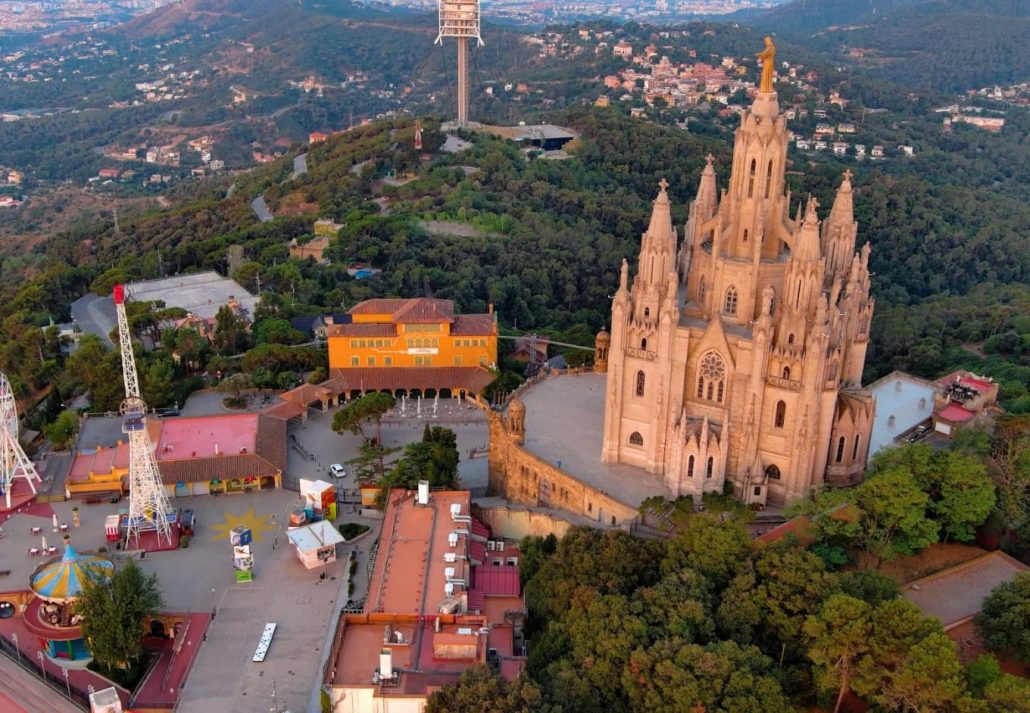
After hiking Mount Tibidabo you’ll be gifted with a jaw-dropping view of Barcelona and the glittering waters of the Mediterranean Sea.
On the top of the mountain, you’ll also see the stunning Temple of the Sacred Heart of Jesus, a commanding basilica that blends Neo-Gothic and Modernist influences.
With its towering spires, intricate detailing, and ornate sculptures capturing the eye, Tibidabo & Temple of the Sacred Heart of Jesus is a true gem.
Perched on top of the temple stands a monumental bronze statue of Jesus Christ with open arms, known as the Sacred Heart statue.
After visiting the basilica, make your way to the Tibidabo Amusement Park, the longest-running amusement park in the country and Europe’s third-oldest.
The park has a pulse-pounding rollercoaster that swings daring riders more than 500m above sea level.
Address: Ctra. de Vallvidrera al Tibidabo, 111, 08035 Barcelona, Spain
Zona de Banys del Fòrum (Fòrum Bathing Area)
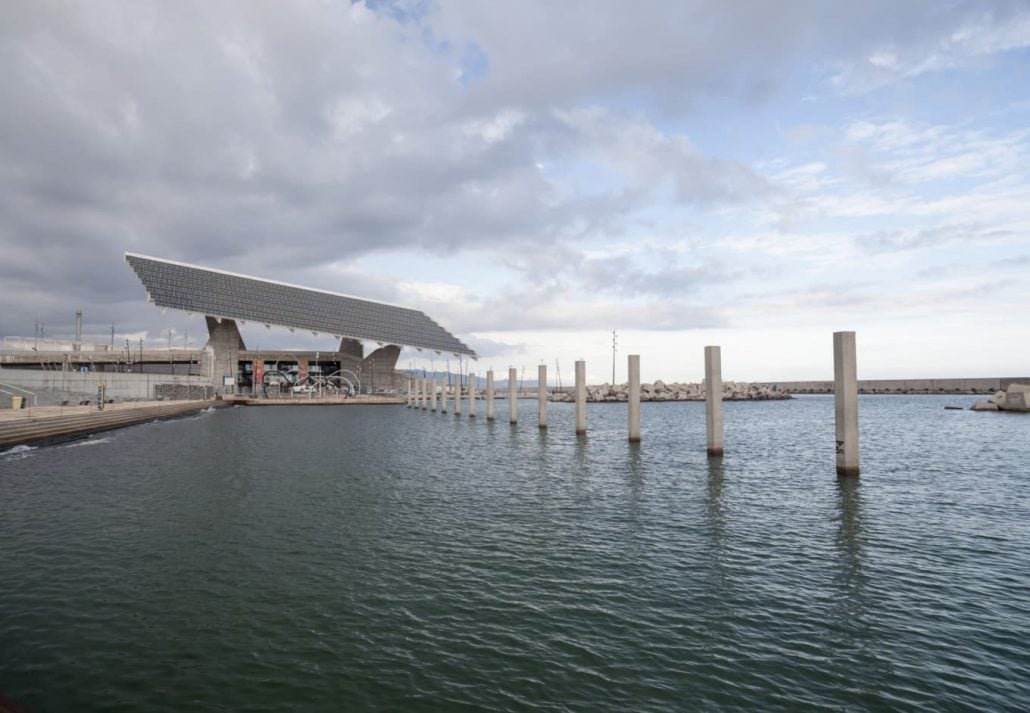
The Fòrum Bathing Area is a modern and inviting coastal space where visitors can enjoy a refreshing swim in the Mediterranean Sea.
Situated in the Diagonal Mar neighborhood, this well-maintained swimming pool has a large deck that extends into the sea, creating a spacious platform for sunbathing, relaxation, and direct access to the water.
The Fòrum Bathing Area boasts crystal-clear waters, making it ideal for swimming and cooling off from the hot sun of Barcelona.
Address: Banys del Fòrum, Plaça del Fòrum 1, 08019 Barcelona, Spain
FAQ
What not to miss when visiting Barcelona?
When you visit Barcelona, make sure to explore the city’s main attractions like the Sagrada Familia, Casa Batllò, Park Güell, and Las Ramblas.
What is Barcelona unique for?
A combination of history, culture, architecture, soulful cuisine, vibrant atmosphere, and natural beauty is what makes Barcelona so unique.
What is the most famous sight in Barcelona?
La Sagrada Familia is not only the most famous attraction in Barcelona but also the most visited landmark in Spain.
What are the best hidden gems in Barcelona?
The top Barcelona hidden gems are:
- Hospital de Sant Pau (Recinte Modernista de Sant Pau)
- Bunkers del Carmel
- Museu de la Xocolata
- Santa Caterina Market
- Casa Vicens
- Parc del Laberint d’Horta
- Pedralbes Monastery
- Pavellons Güell
- Jardins de Mossen Costa i Llobera
- Mirador de l’Alcalde
- Parc de la Ciutadella
- Roman Ruins in Barcelona’s Gothic Quarter
- La Plaça – Gastro Mercat
- Teatre Grec & Grec Garden
- Fundació Antoni Tàpies
- Tibidabo & Temple of the Sacred Heart of Jesus
- Zona de Banys del Fòrum (Fòrum Bathing Area)
Browse. Book. Stay.
CuddlyNest provides all accommodations to all travelers at the best price. Find unlimited travel inspiration on our blog and social media channels:
Facebook, Instagram, Pinterest, and X.
You Might Also Like:
Spain Travel Apps
The 7 Best Places For Shopping in Madrid
10 Best Hotels In Madrid, Spain
The 11 Best Tapas Bars in Madrid
The 12 Best Neighborhoods in Madrid
Madrid With Kids: 12 Fun Things To Do In The City
Best Museums In Madrid, Spain
Best Cities to Visit in Spain
La Tomatina Festival, Spain
Eating Tapas In Granada, Spain
Vegan Restaurants in Alicante, Spain
A Complete Guide To The 15 Best Festivals In Spain
The 10 Best Spanish Cheese You Should Try
The Ultimate Guide to Lobos Island, Spain
The Best Time To Visit Madrid, Spain
